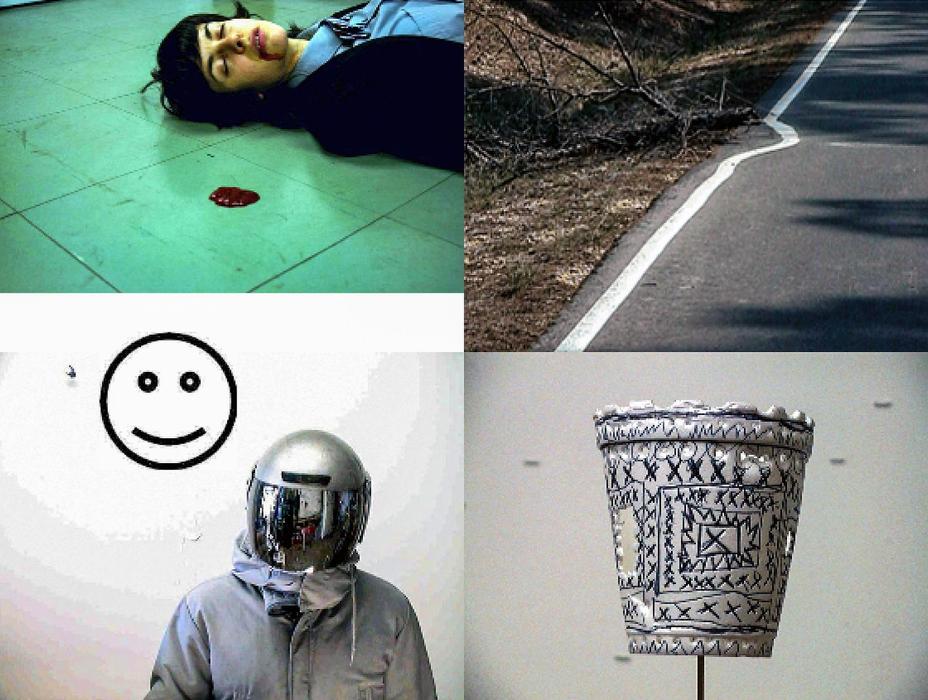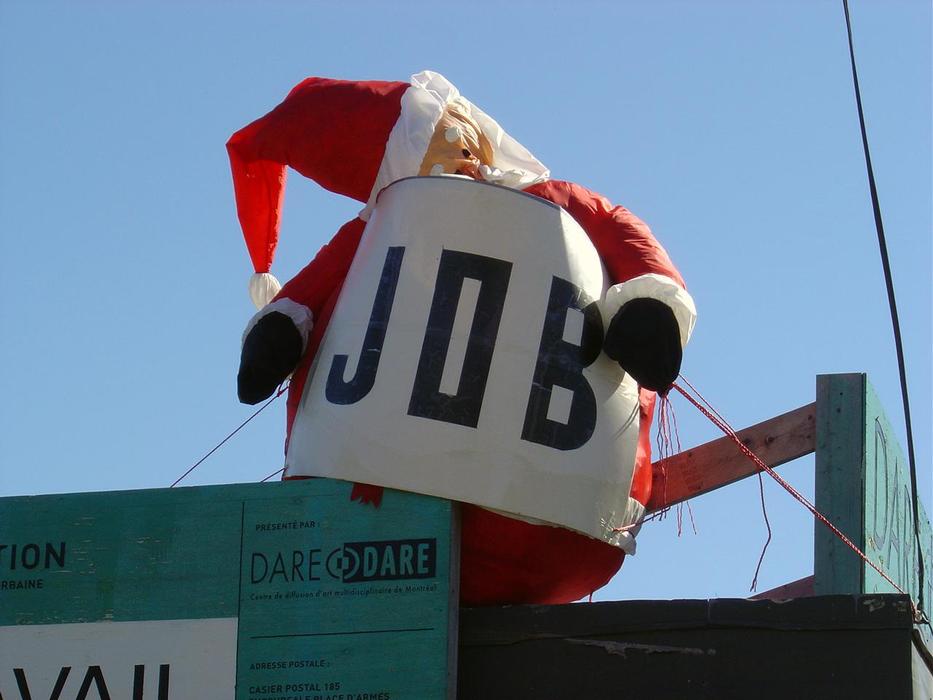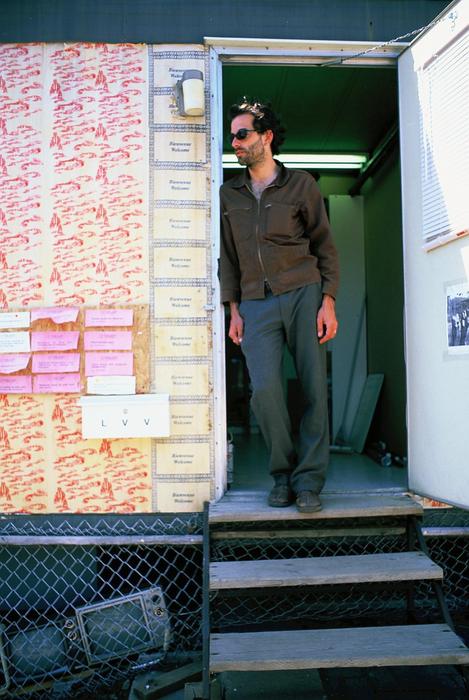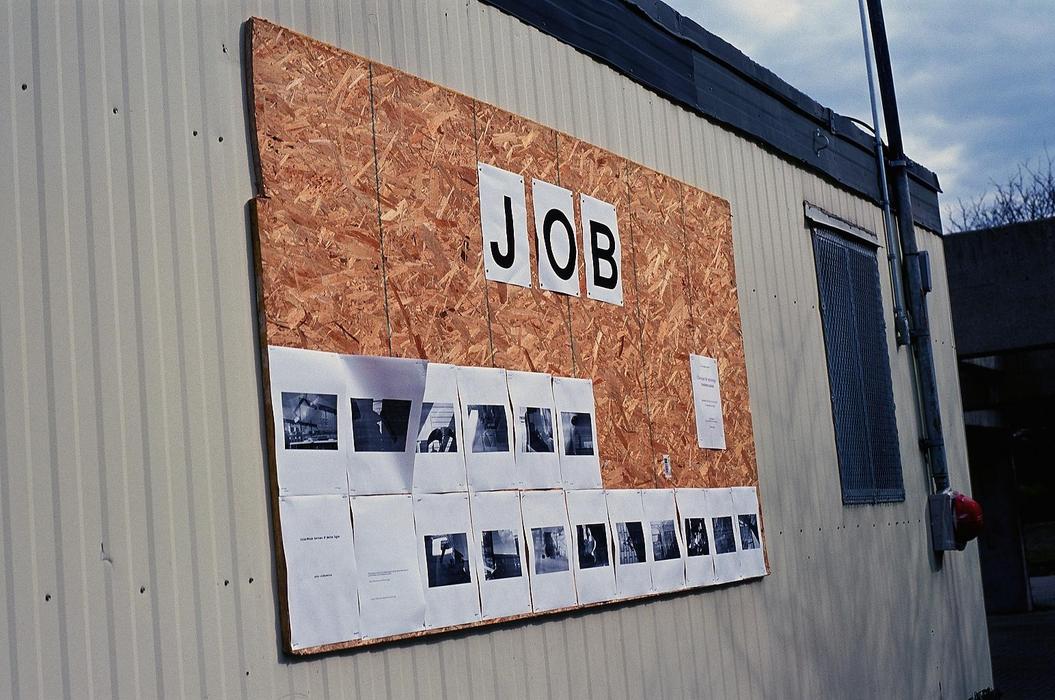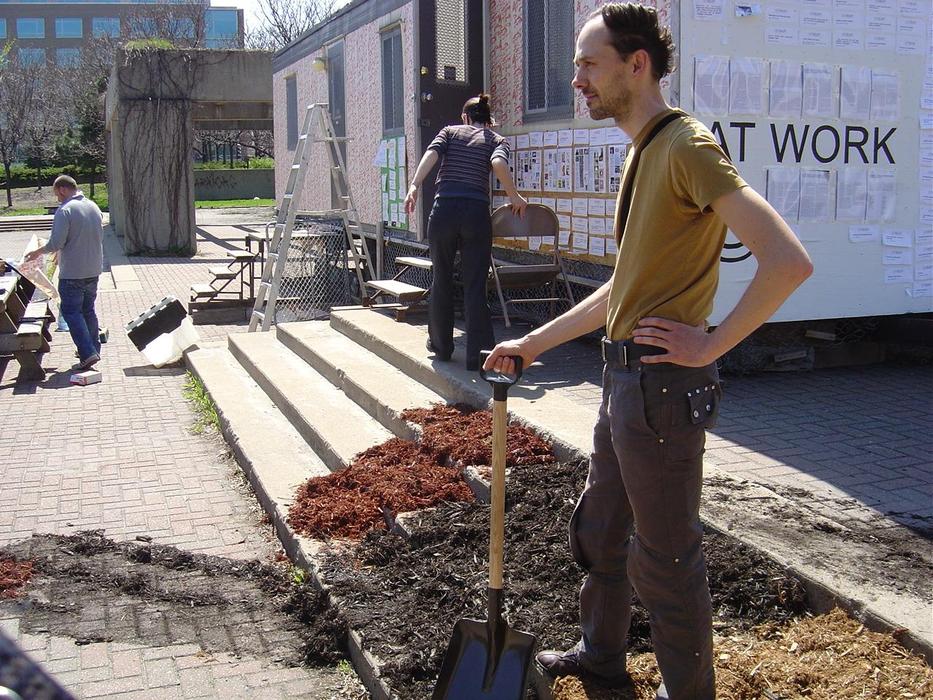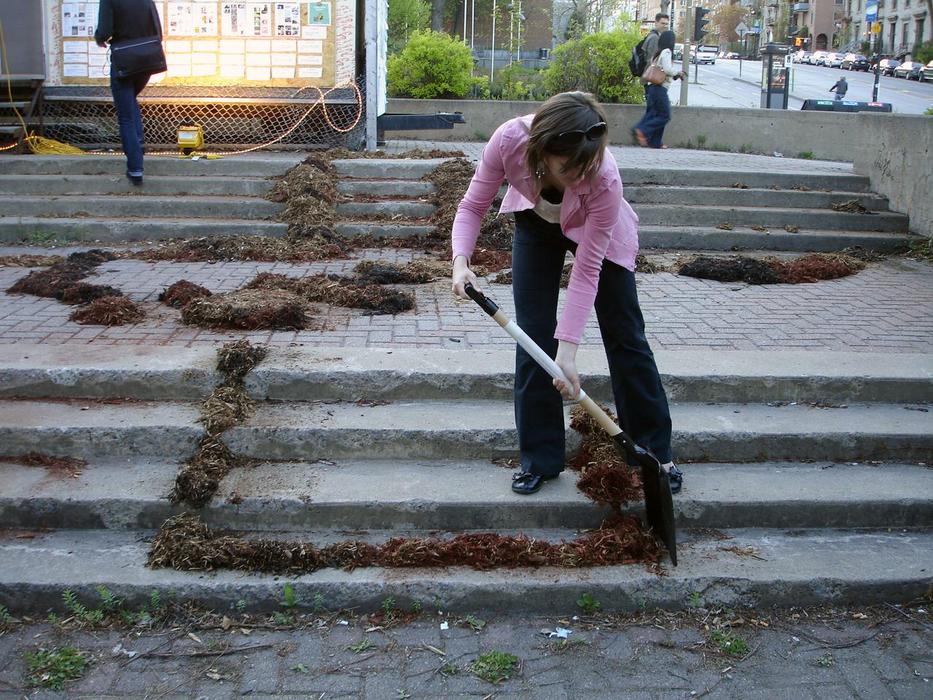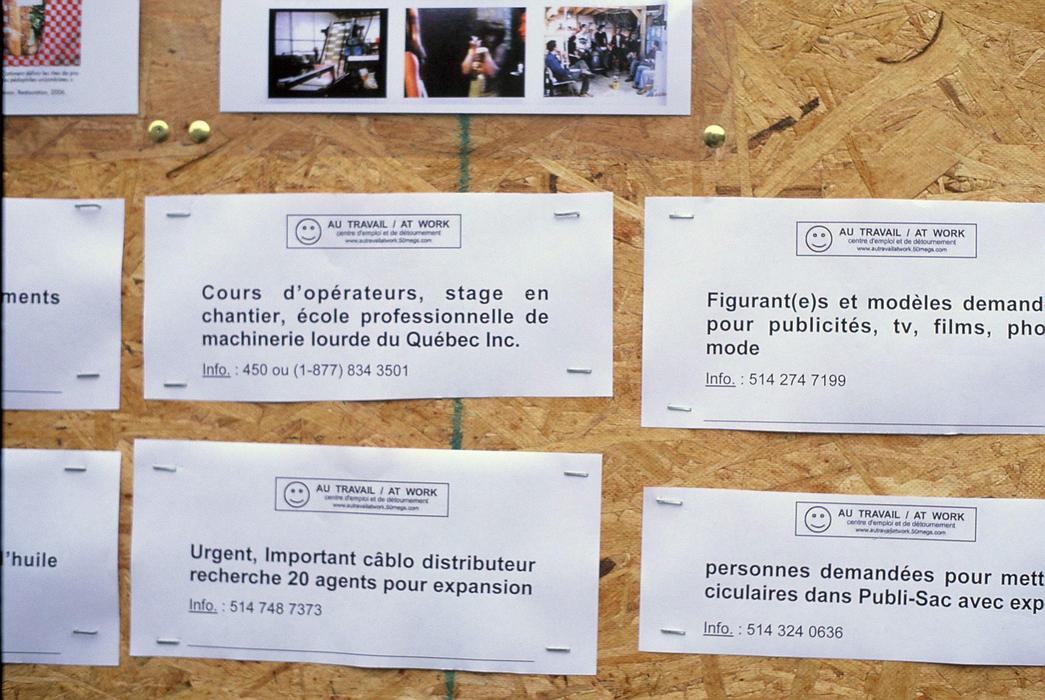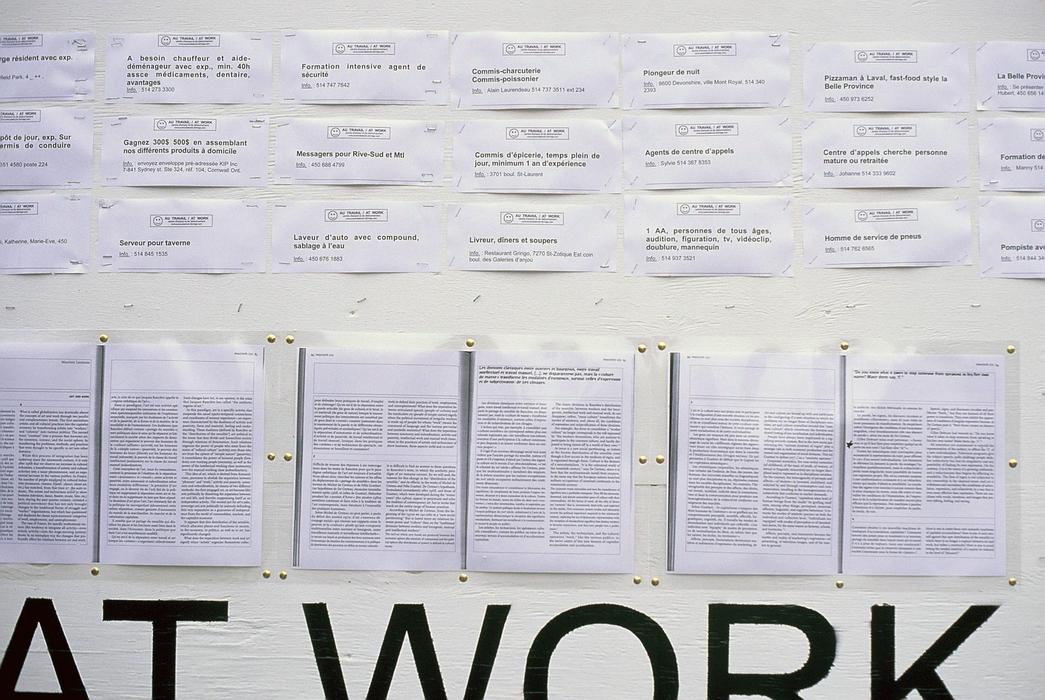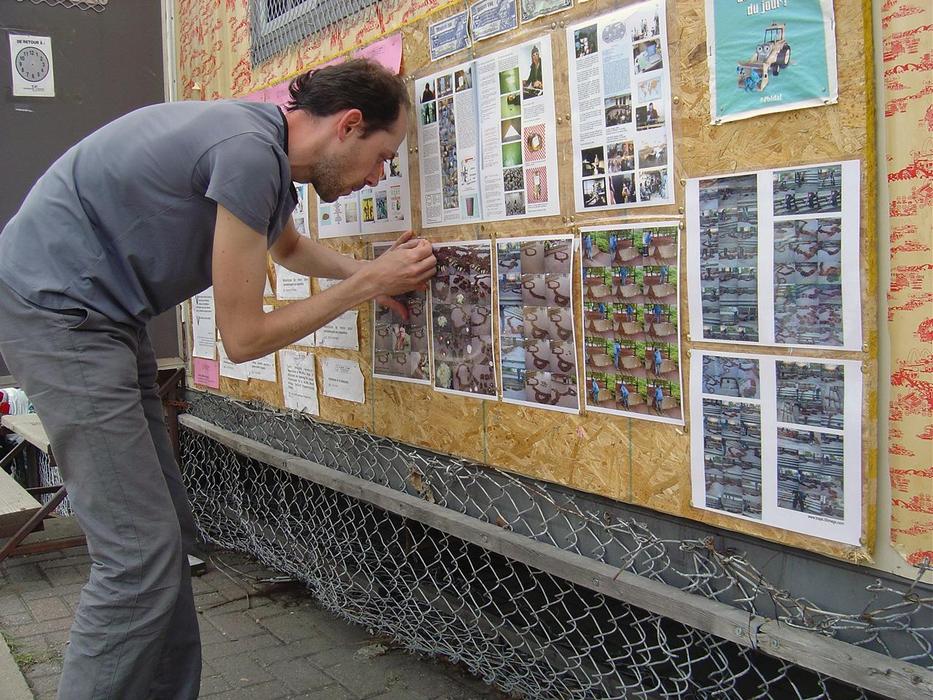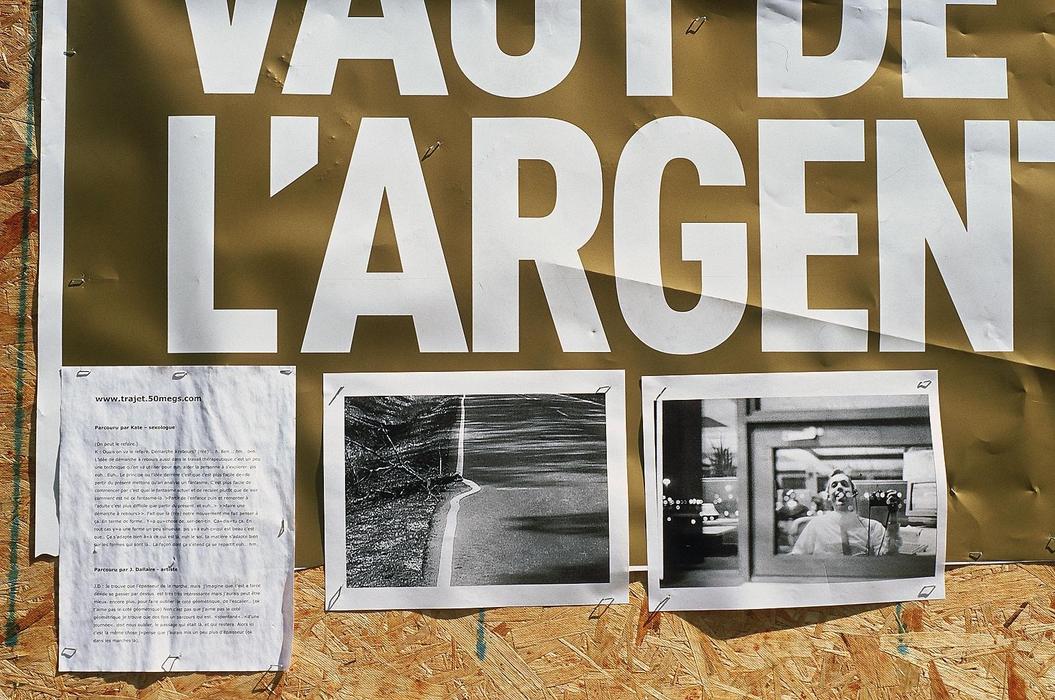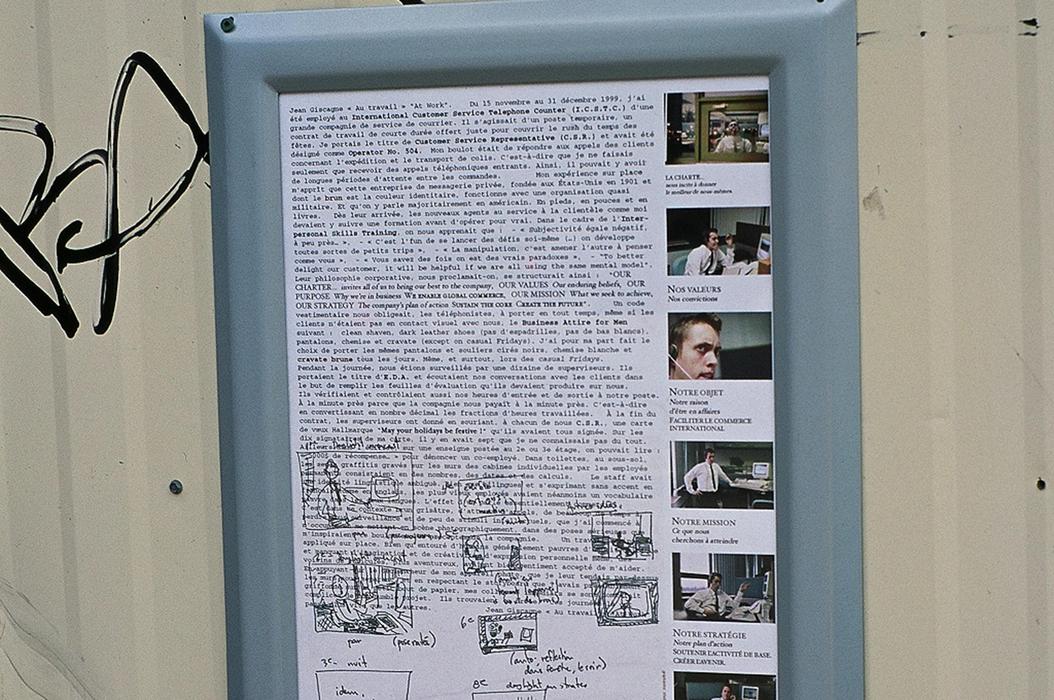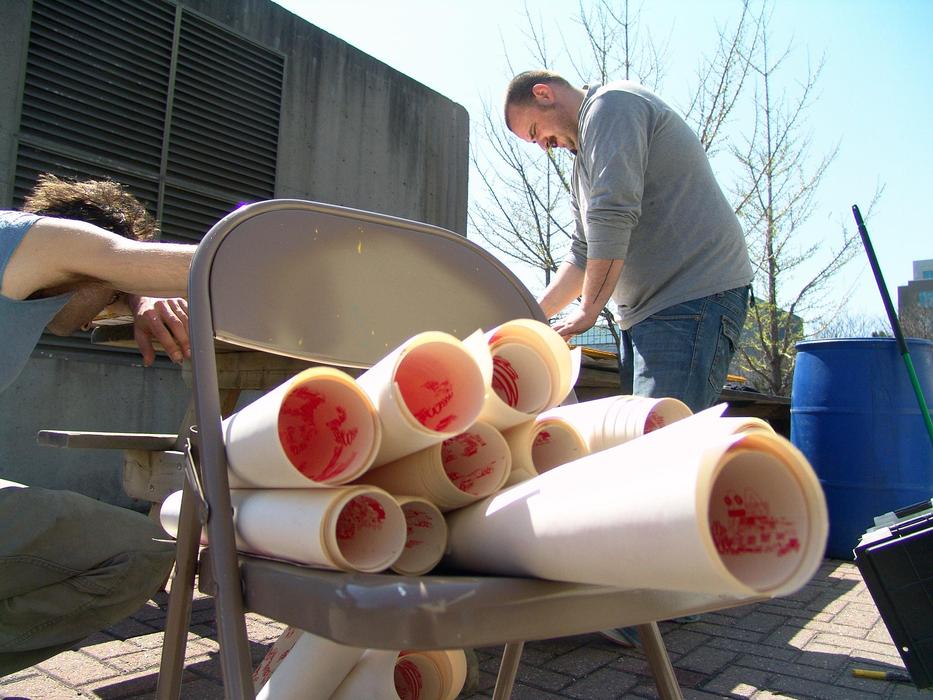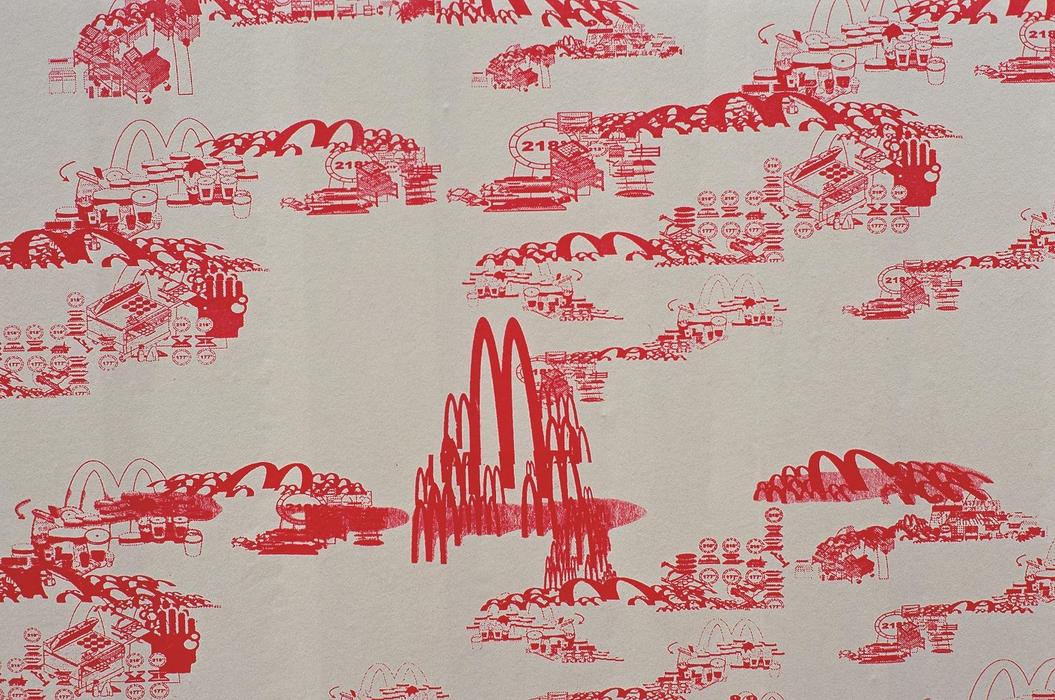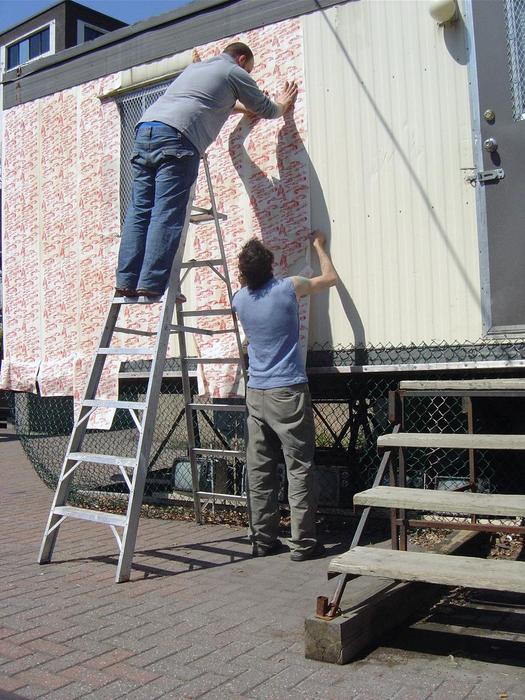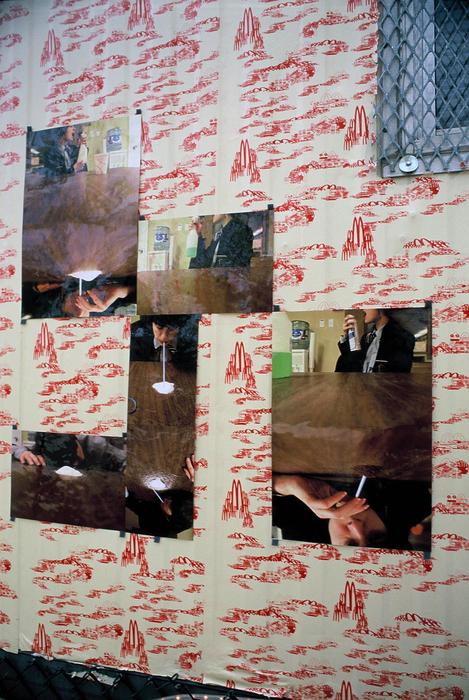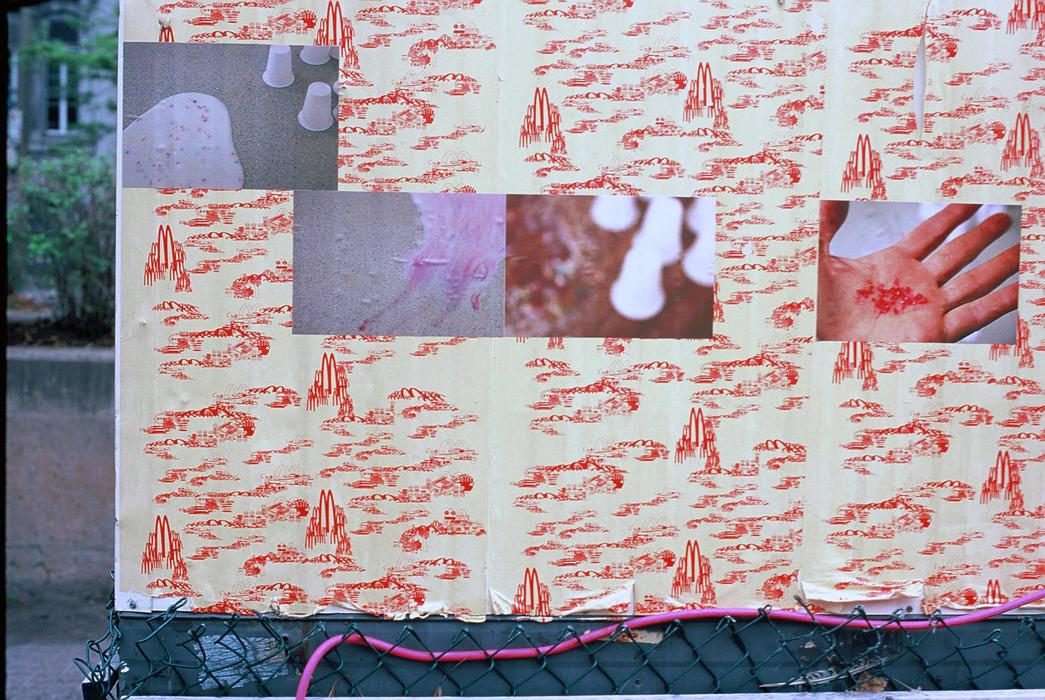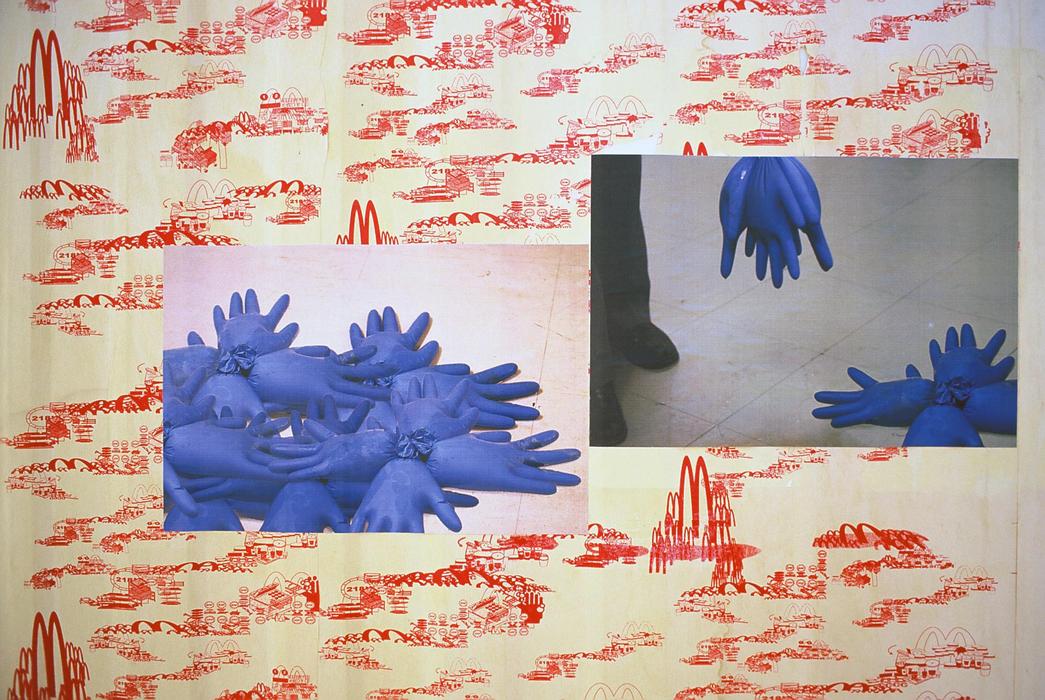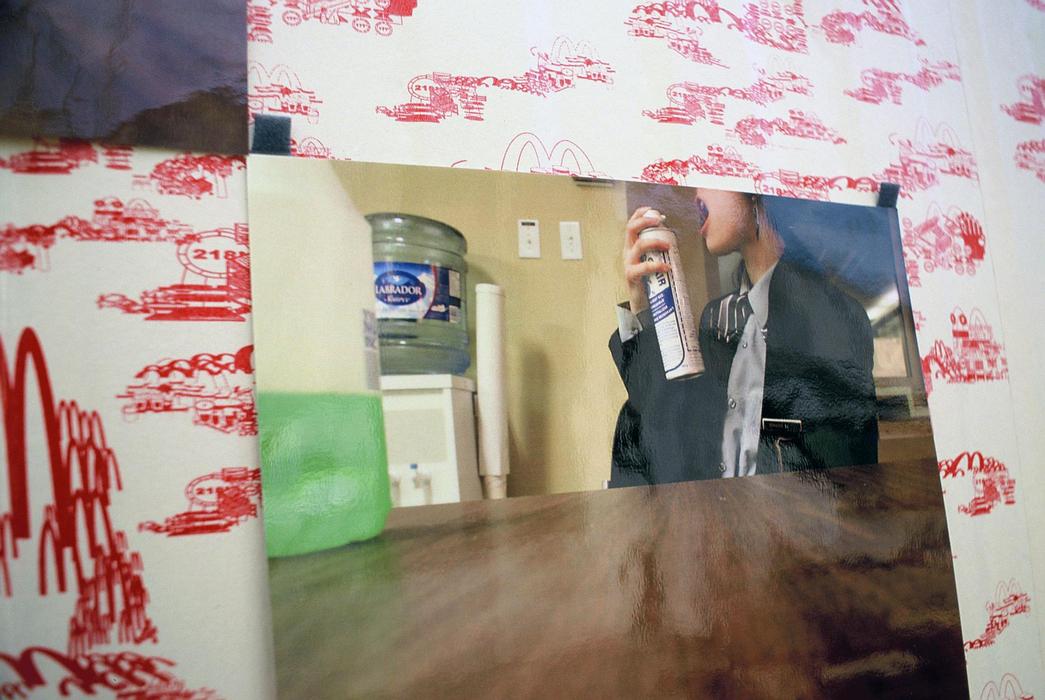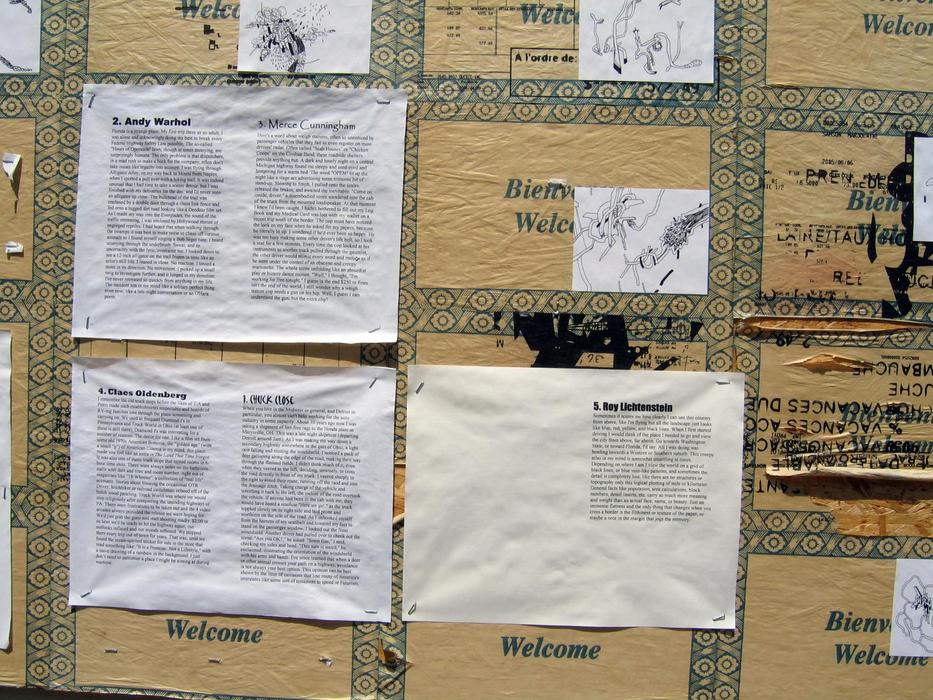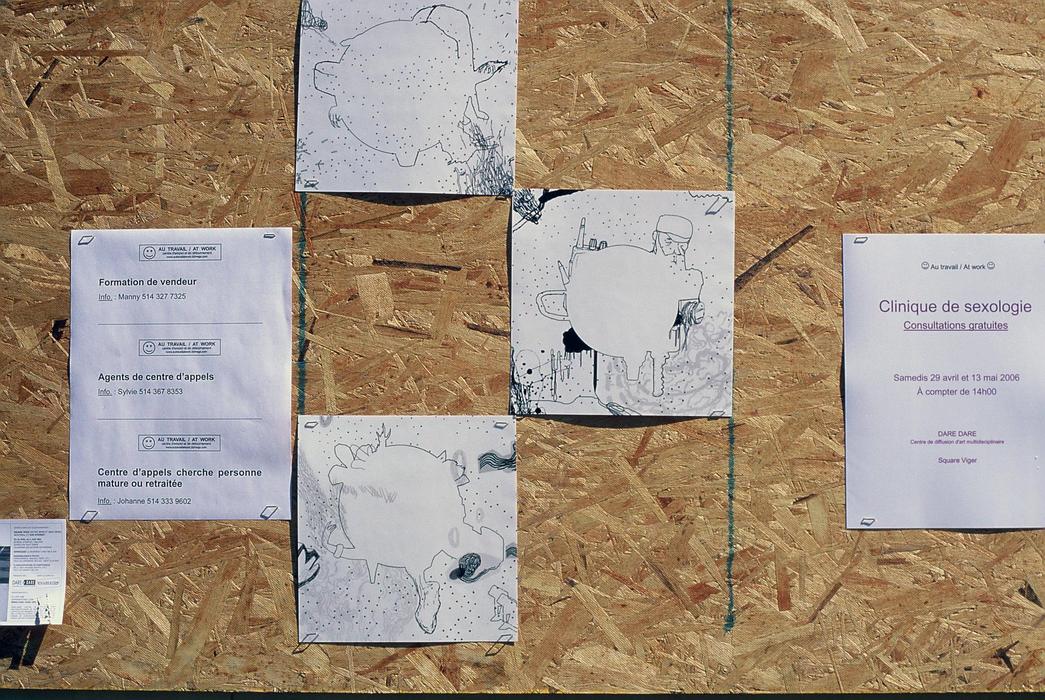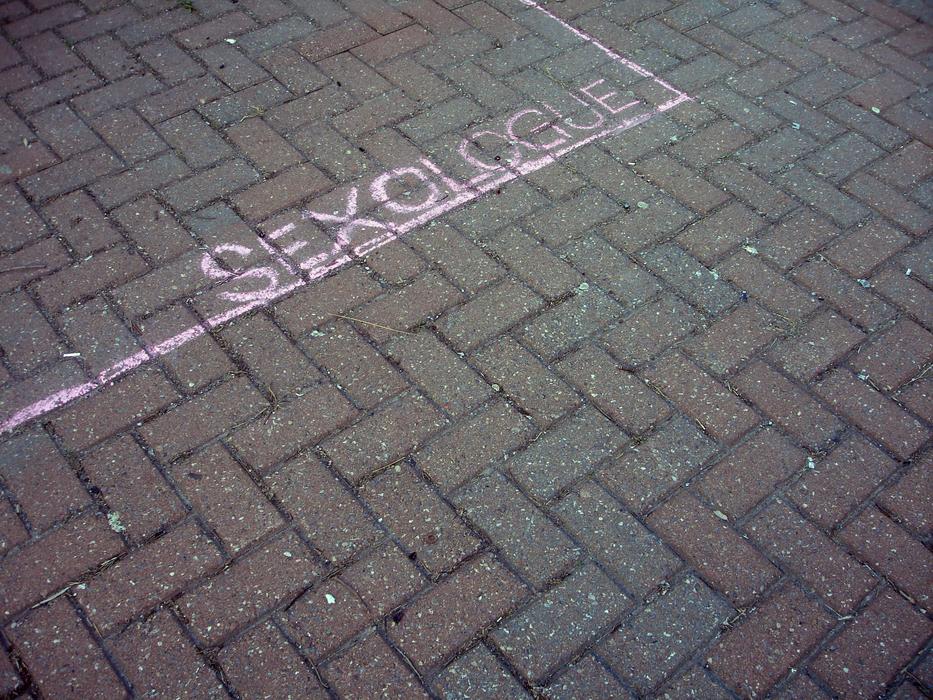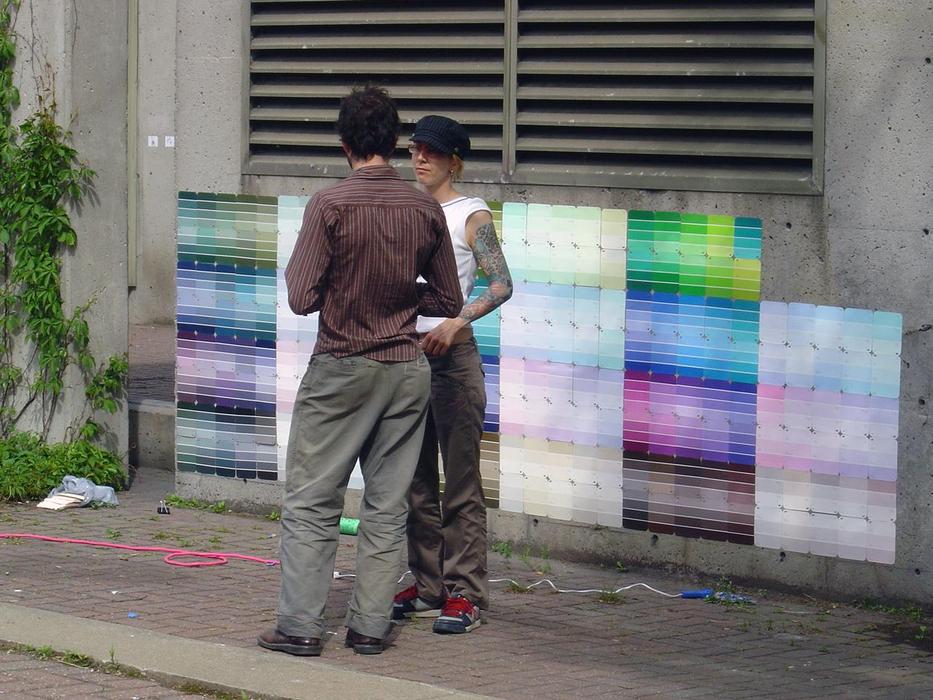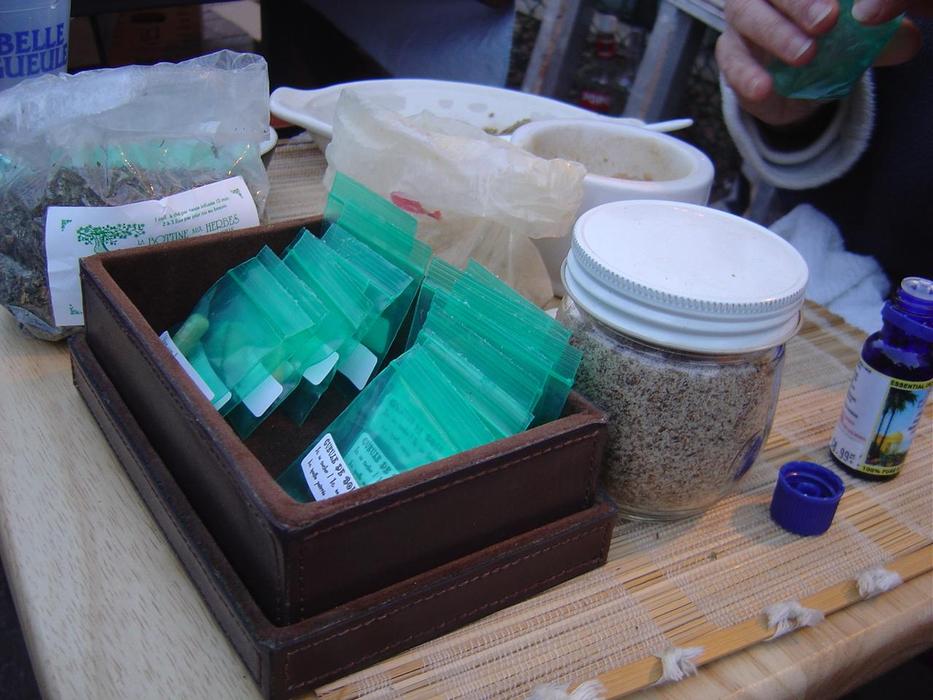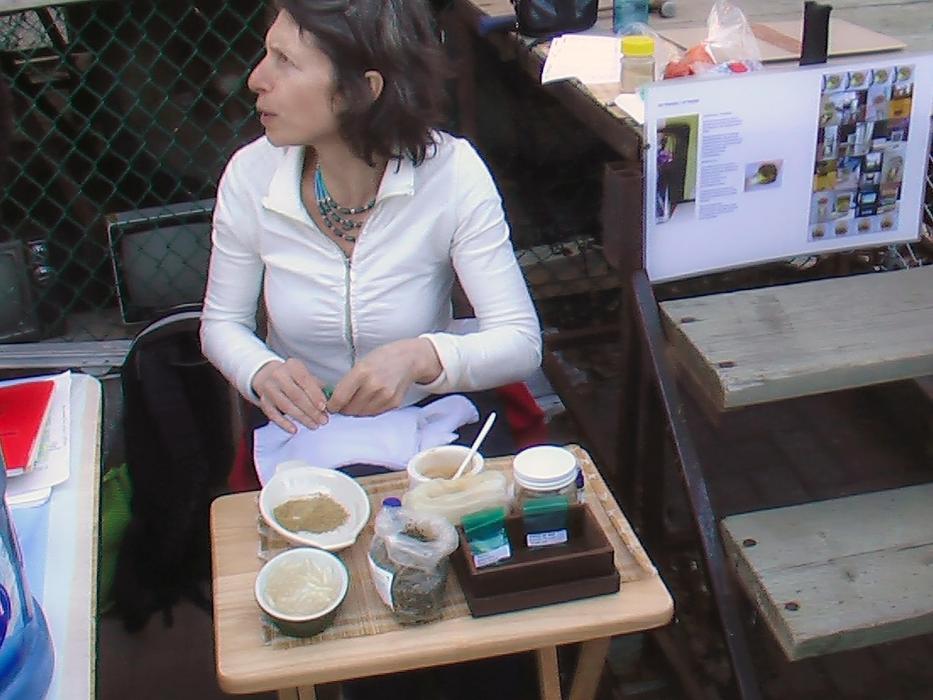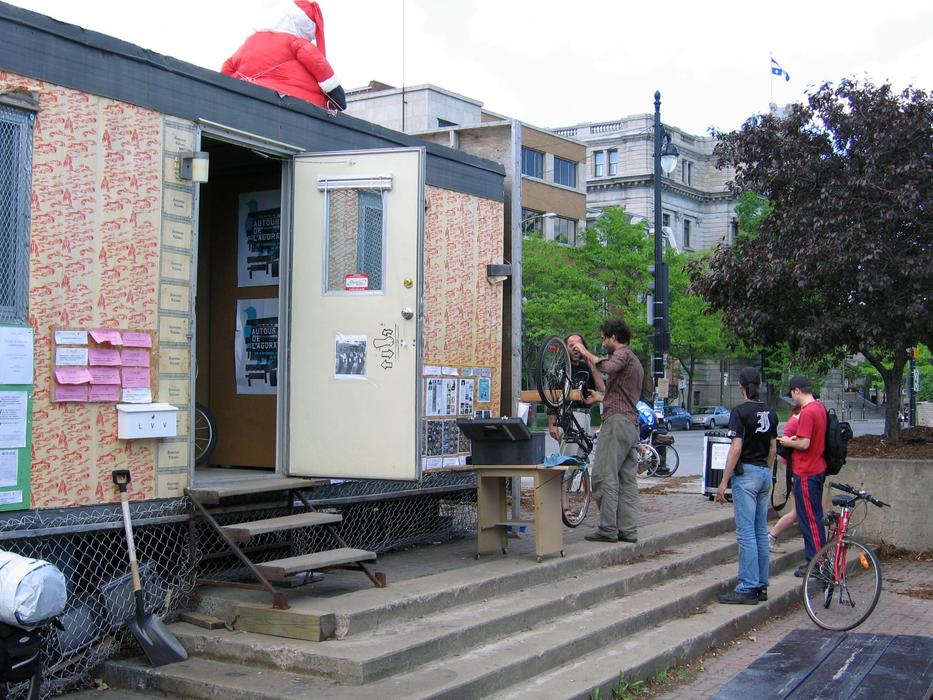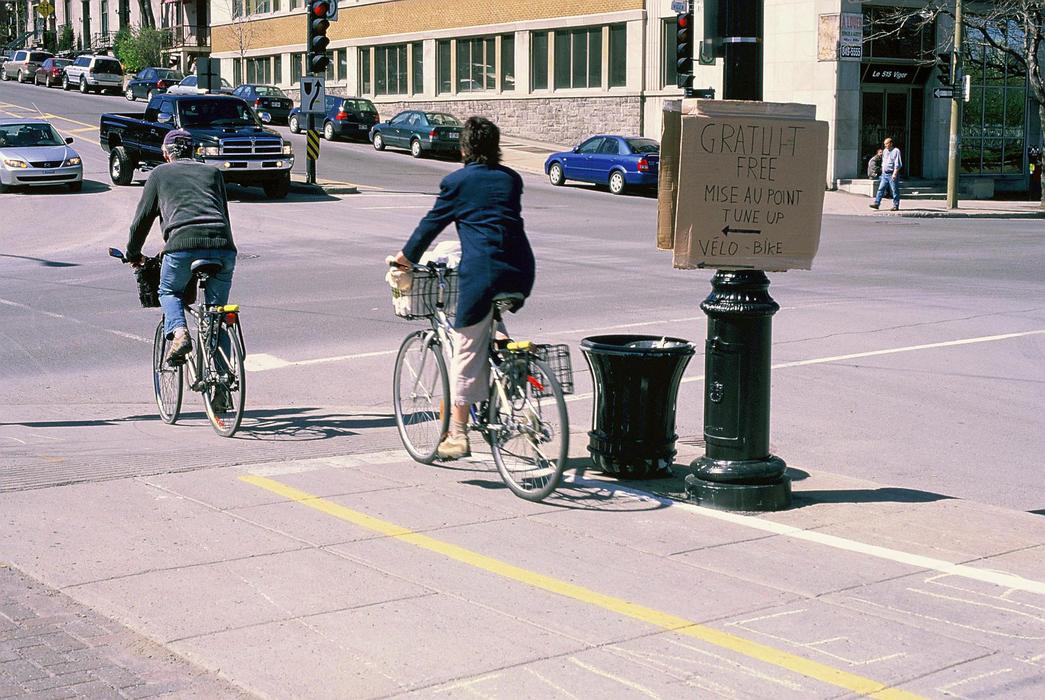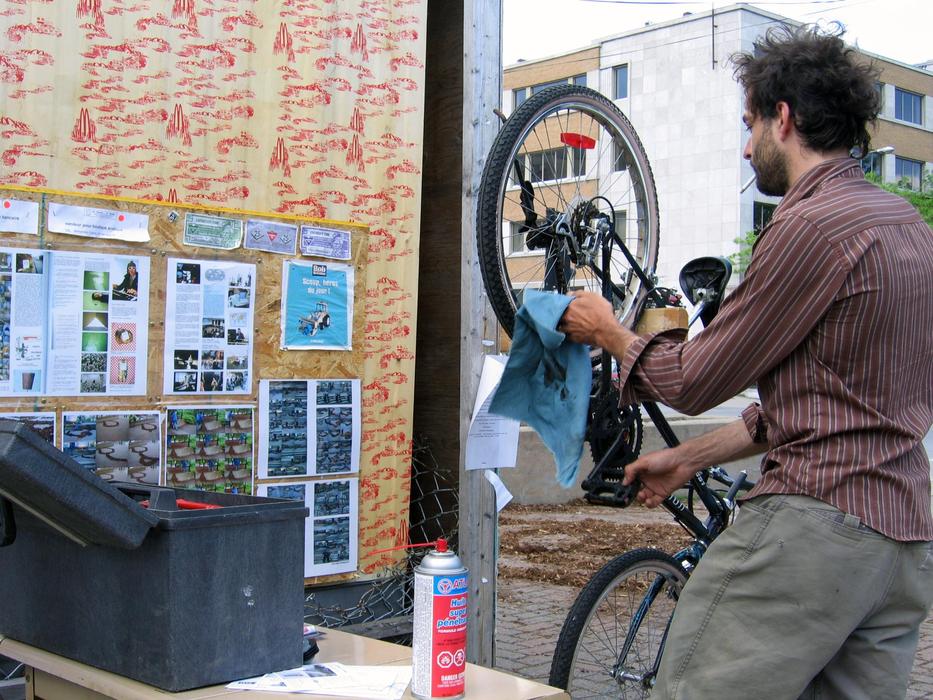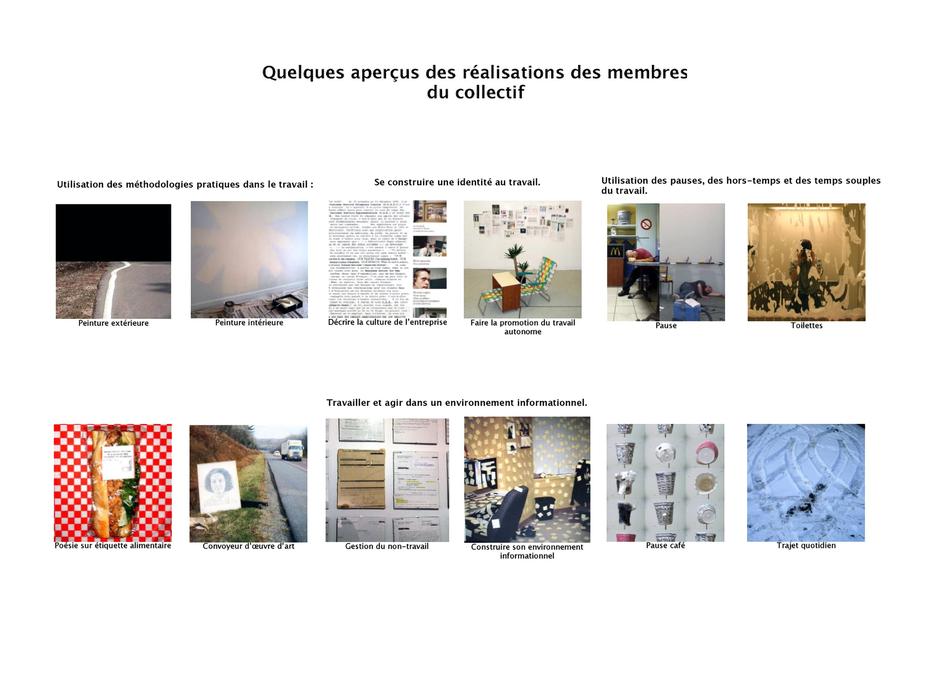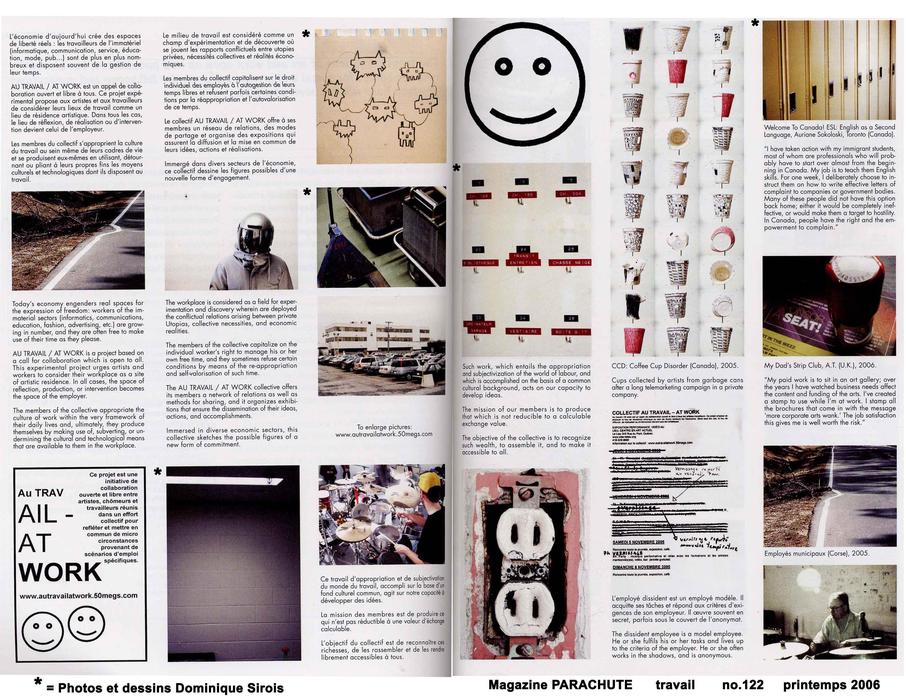Programming
Collectif Au travail / At work
Projet d’emploi et de détournement
AT WORK / AT WORK is a call for open and free collaboration. This experimental project proposes to artists and workers to consider their workplaces as an artistic place of residency.
View more
Centre d’emploi et de détournement
At Viger Square and on Internet
Gallery/office opened at all time
Opening friday may 5th, 18h to 23h
Festive gatherings (performance, music, video, etc.) every Friday from 18h-23h
(except May 26)
Clinics / sharing of skills (bike, computer, massage, food, etc.) every Saturday 14h-19h
www.autravailatwork.org
Today's economy creates real freedom spaces: the immaterial workers (IT, communication, service, education, fashion, advertising ...) are more and more numerous and often have the management of their time.
AU TRAVAIL / AT WORK is a call for open and free collaboration. This experimental project proposes to artists and workers to consider their workplaces as an artistic place of residence. In all cases, the place of reflection, realization or intervention becomes that of the employer.
The members of the collective appropriate the culture of work within their own living environment and produce themselves by using, diverting or folding for their own ends the cultural and technological means at their disposal. The workplace is considered a field of experimentation and discovery where the conflicting relationships between private utopias, collective necessities and economic realities play out.
The collective AU TRAVAIL / AT WORK offers its members a network of relations, modes of sharing and organizes exhibitions that ensure the dissemination and sharing of their ideas, actions and achievements. Immersed in various sectors of the economy, the members of the collective draw the possible figures of a new form of engagement. The movement was initiated in February 2005 with the aim of exploring and gather multidisciplinary actions in the context of the incessant declaration of the new world order and its domination over all economies. This act of resistance to the power of neoliberal economic rationalization essentially consists in enriching the capacities of action, communication, creation and reflection among the members of the collective.
An anarchist section of the collective aims to abandon completely the commercial-utilitarian-economist conception of work and considers the development of human capacities of imagination and resilience as ends by themselves. The members of the anarchist section accept any work on any condition and free themselves from the constraints related to it.
The job market just got hotter. The working artist owns the world.
Activity Report
An employment office and a gallery were open at all times at Viger Square from April 24 to June 3, 2006
"Apprentice mechanics for truck and trailer repairs." "Experienced roaster, full time, evening manager." "Looking for people to work for a nice massage salon. Good clientele." "To make a lot of money. Business of the future and simplified. Info: xxx-xxxx." "Very very sexy and naughty waitress and barmaid for breakfast and lunch." "Part-time seamstress for upholstery in shop and/or at home." "Seeking couple where the man will be a mushroom farmer and the wife a mushroom picker. Salary for man $10/hr, for wife $8/hr."
"Are these real jobs?" was the first question passersby asked to members of the Au travail / At work collective who were standing around the DARE-DARE trailer transformed for the project into an employment center. "Yes, these offers are taken from the Journal de Montréal, 24H or Métro. Discussions ensued about the offers posted and the reasons for opening an employment center in the middle of Viger Square. Recruitment. The collective proceeded to recruit new participants.
It is against the neo-capitalist system and its tertiary sector that this collective, open to all, was constituted. In response to the denaturation of the individual by the forces of production, a few "delinquent" elements began to take advantage of the time spent at work to act, intervene, shape and transform the assigned tasks, the consigned tools, the actions prescribed by the employer. Reports of these actions (images, sounds, etc.) were posted on the web or disseminated during artistic activities to encourage further interventions and thus recruit other disillusioned employees. At least the collective assured confidentiality to the participants...
In Viger Square, a member of the collective had perched a vinyl Santa Claus on the roof of the trailer, which could be seen from a distance and served as bait. The Saturday afternoon skill-shares were once again used as a lure for nearby cyclists and pedestrians. The strategy worked well, especially since another member offered a bike tune-up service near the bike path: about 50 bikes were repaired each Saturday. During the tune-ups, a sex therapist gave free consultations, a saleswoman gave samples of liquor products, a landscape architect offered a shovel and wood chips to build paths in the park, a day laborer in a movie theater made popcorn with a propane burner. These afternoons became an opportunity for each of them to bring their work into the park: to move their workplace into a new context. The public would join in the fun.
In Viger Square, a member of the collective had perched a vinyl Santa Claus on the roof of the trailer, which could be seen from a distance and served as bait. The Saturday afternoon skill-shares were once again used as a lure for nearby cyclists and pedestrians. The strategy worked well, especially since another member offered a bike tune-up service near the bike path: about 50 bikes were repaired each Saturday. During the tune-ups, a sex therapist gave free consultations, a saleswoman gave samples of liquor products, a landscape architect offered a shovel and wood chips to build paths in the park, a day laborer in a movie theater made popcorn with a propane burner. These afternoons became an opportunity for each of them to bring their work into the park: to move their workplace into a new context. The public would join in the fun.
The Friday evening parties became a pretext for the collective to show the work they had done during their working hours or inspired by their jobs. One member, a conservator, covered the side of the trailer with wallpaper inspired by the trademark of a multinational company. Another conservationist brought home placemats from work with her salary statement printed on them. An apprentice herbalist prepared tonic or hangover pills on the spot and distributed them in small Ziplock bags. A house painter made a huge mosaic with color samples for painting.
The nature of the interventions varied from job to job. Some participants decided to take their cues from assigned tasks and modify them or reclaim the tools to divert their use; others expanded their scope and area of activity. Two types of behavior were generally observed: an anarchic detour of tasks and techniques, and a work psychology with a valorization of the employee or even a stimulation of productivity.
The collective was unaware at the outset that their visit to Viger Square would conclude the series of projects disseminated in the first part of Dis/location: projet d'articulation urbaine. Two years earlier, this series initiated by DARE-DARE had begun with a construction site by artist Doug Scholes. During these two years, the center invited artists to elaborate the common imagination, to design the collective space, to transform the public park into a space for the dissemination of art (in keeping with the initial spirit of the place as conceived by Charles Daudelin), to re-network the square with the city's parks dedicated to recreation and relaxation, and to reflect on the place in its urban context. After this succession of activities, DARE-DARE chose to close its program with a collective effort in which the citizen would find a park whose functions had been diverted and redeployed in a different way.
Jean-Pierre Caissie, August 2006
